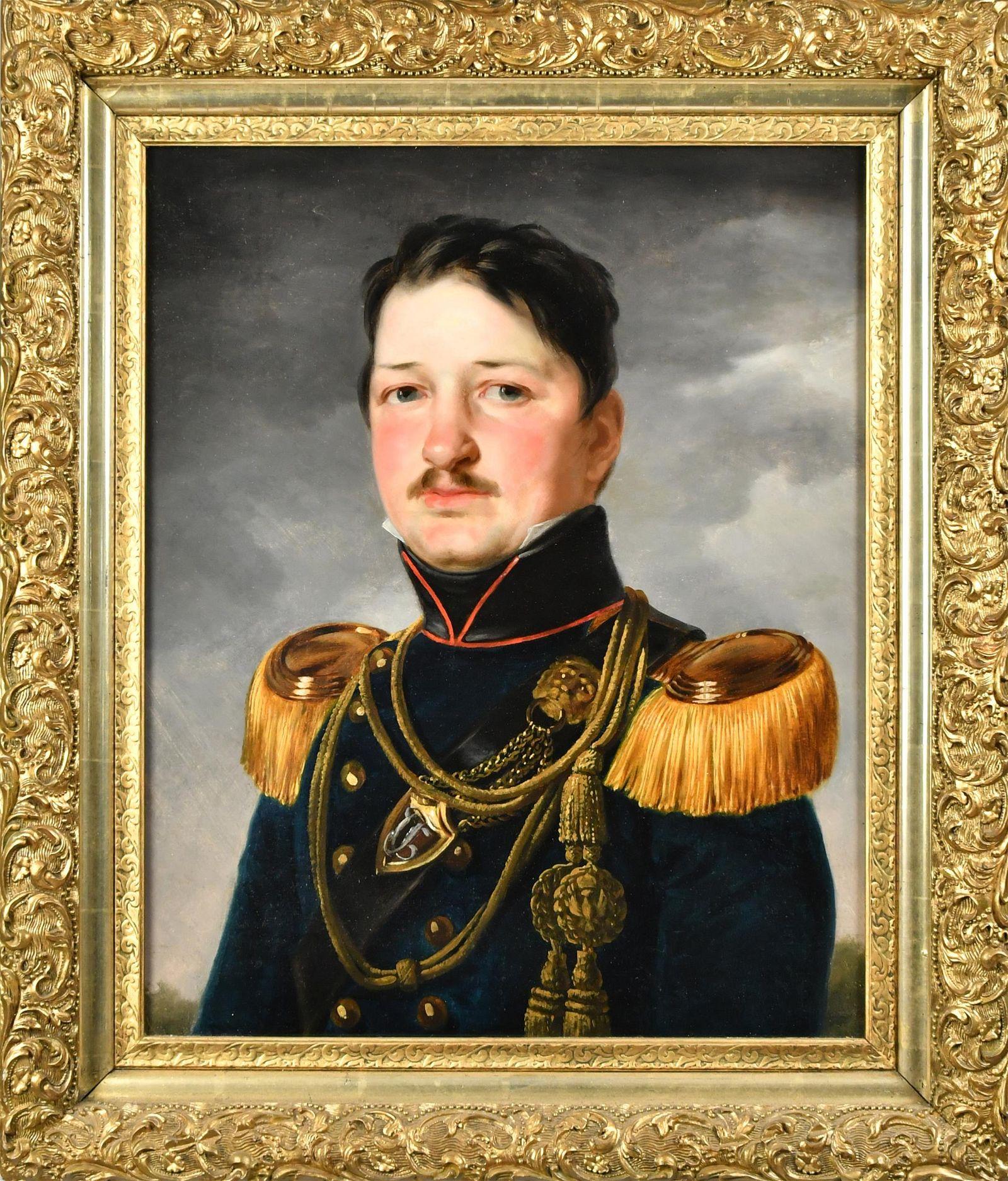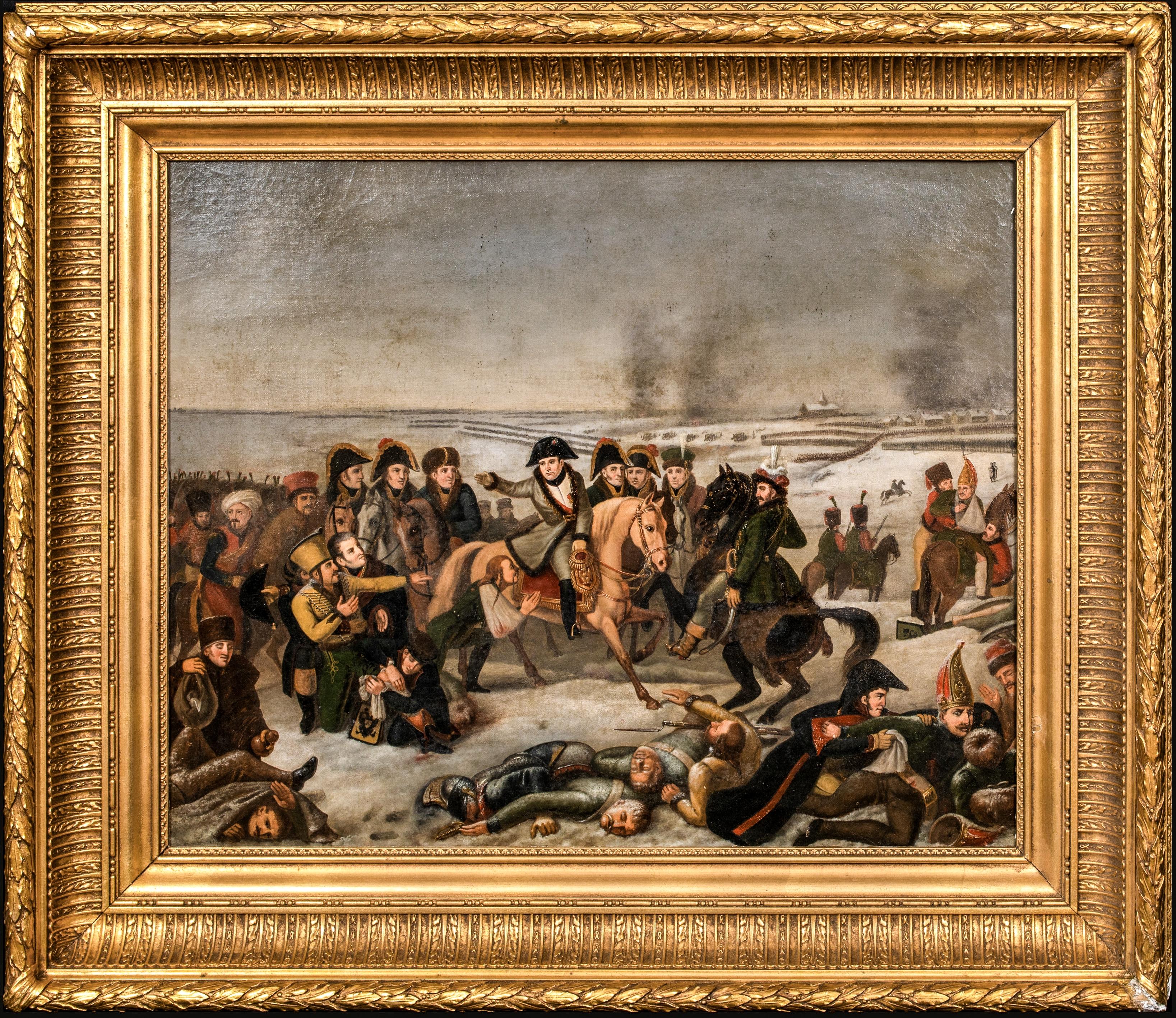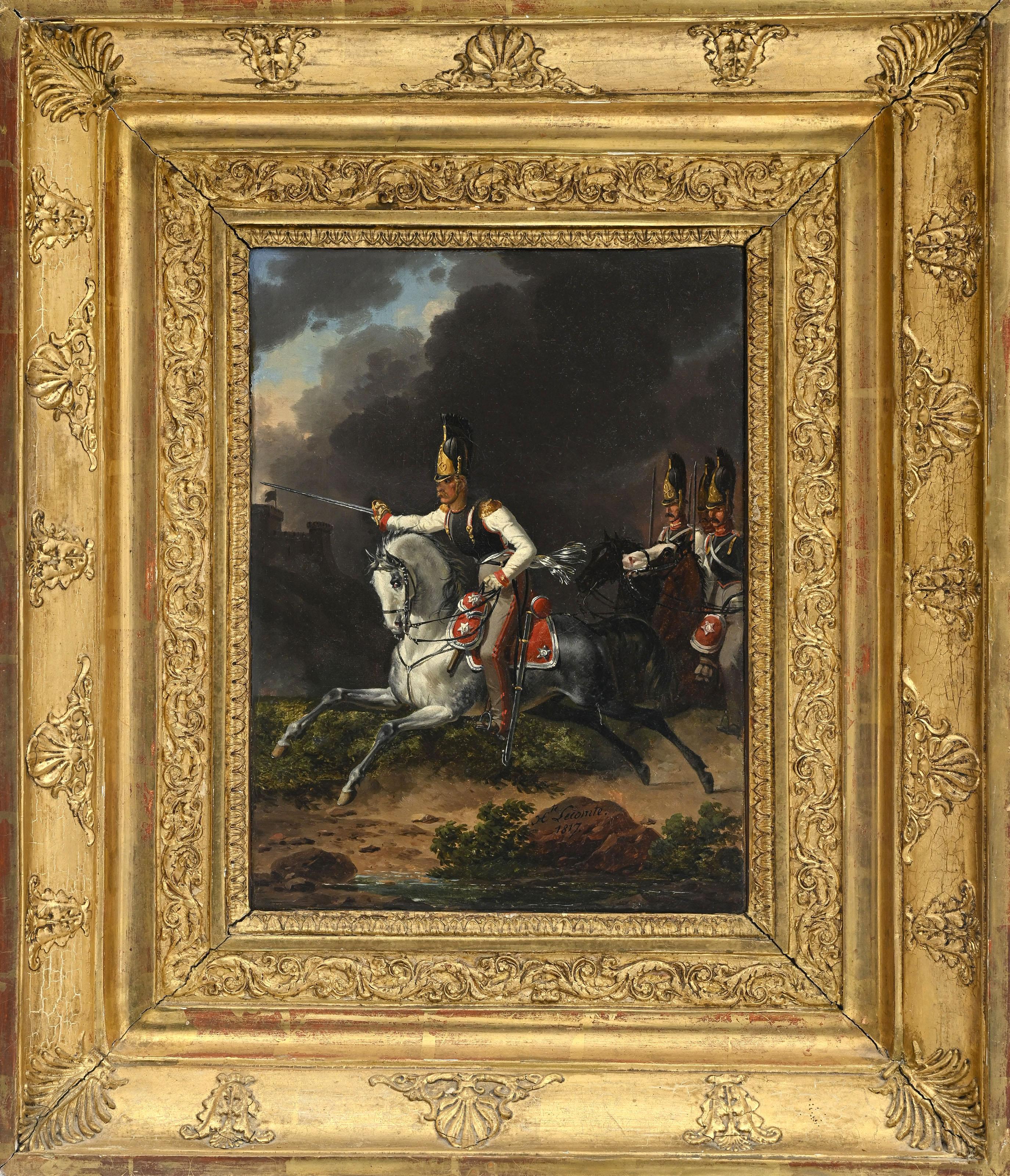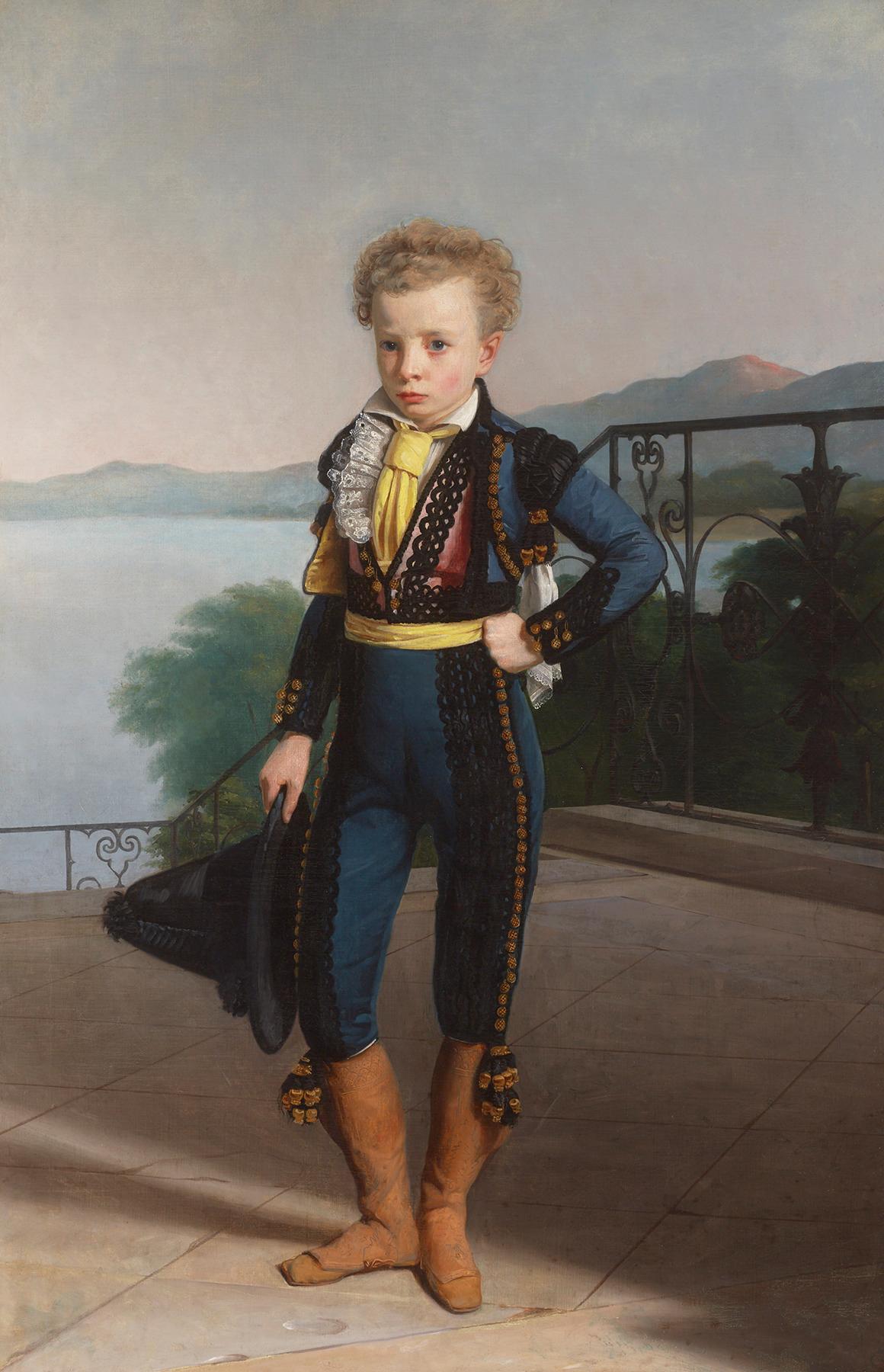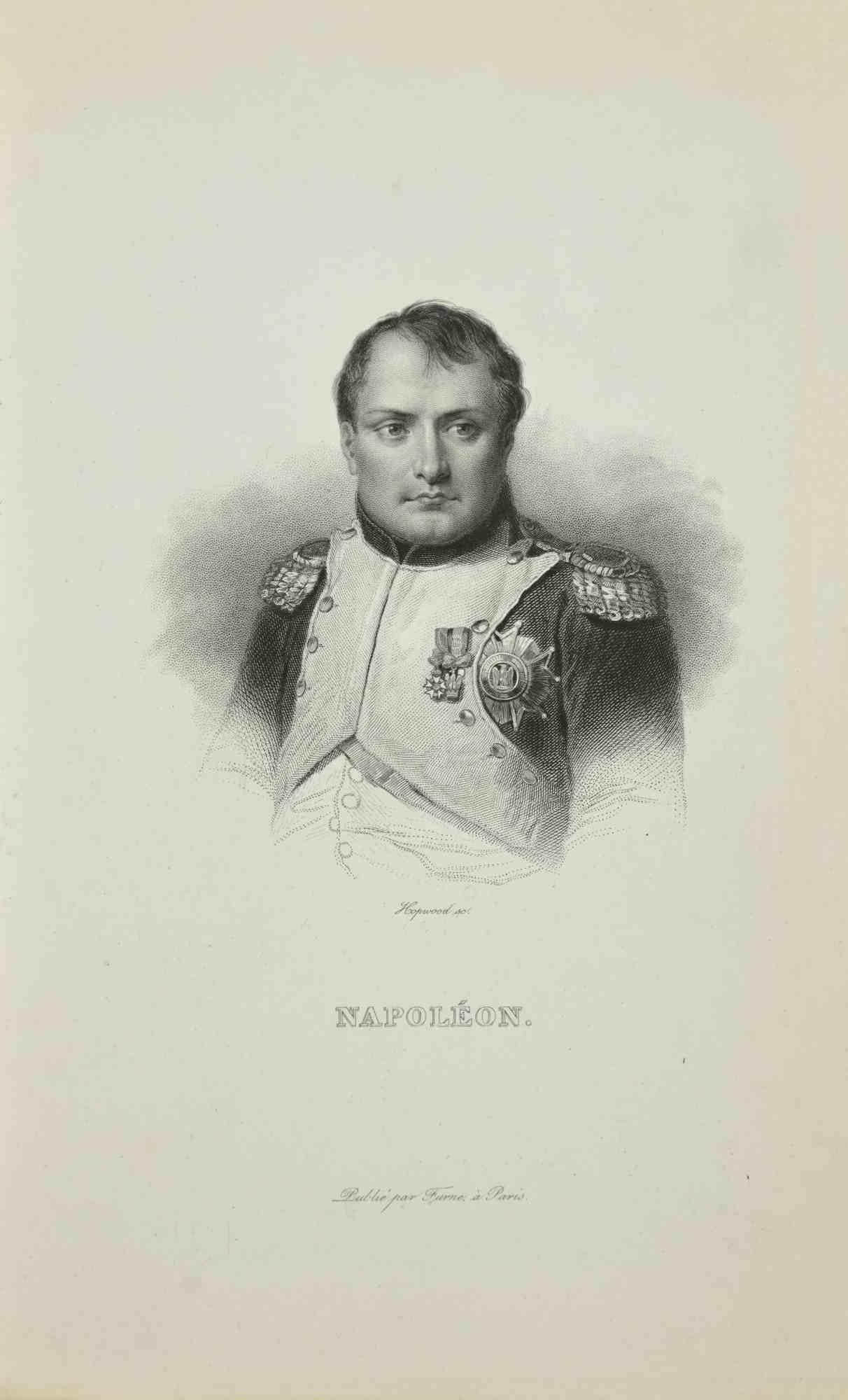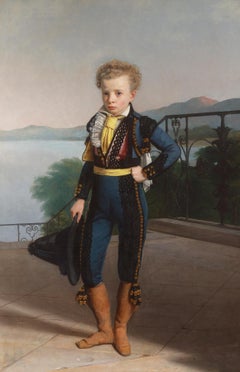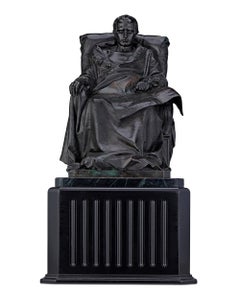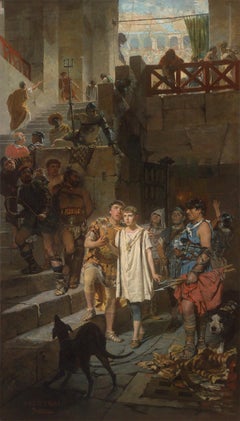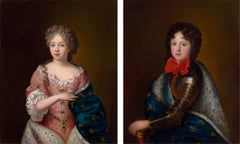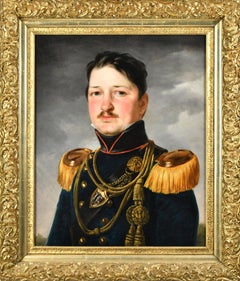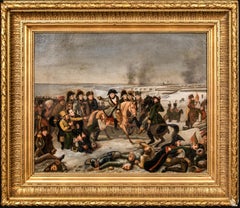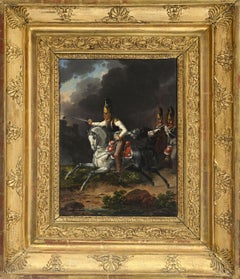Items Similar to Napoléon before the Battle of Moscow
Want more images or videos?
Request additional images or videos from the seller
1 of 6
Joseph FranqueNapoléon before the Battle of MoscowCirca 1812
Circa 1812
$885,000
£671,887.73
€769,963.38
CA$1,256,140.45
A$1,370,131.60
CHF 719,765.14
MX$16,575,783.62
NOK 9,004,498.40
SEK 8,502,038.43
DKK 5,747,246.27
About the Item
Emperor Napoléon I was and remains one of the most legendary military and political figures in history, having held, for a brief period, the fate of the Western world in his hands. Composed by the French painter Joseph Franque, this portrait captures the imposing Emperor addressing his army before the Battle of Borodino in 1812 – a battle that would be one of the final victories of the legendary general’s career. Part of the final showing of Salon portraits of Napoléon I, and one of the few of him as emperor in the field, this rare and monumental work is an impressive portrayal of the French leader at the very pinnacle of his power.
Napoléon invaded Russia in 1812; his aim was to achieve a fast and decisive victory, and then to force the Russians to agree to the terms of a treaty they had signed just four years earlier. The two forces eventually met at Borodino on September 7, 1812 — it would prove to be one of Napoléon’s final victories. After a single day of battle, the Russian forces withdrew, and Napoléon’s Grand Armée pushed on to take the ancient city of Moscow. Yet, they arrived to a city already burning, and what followed was a brilliantly strategic scorched earth retreat by the Russians that ultimately led to Napoléon’s defeat. This incredible oil on canvas offers a captivating portrait of the Emperor before these fateful months, portraying him at the zenith of his power.
Composed for the Salon of 1812, this monumental work by Franque is one of the last French paintings exhibited of Napoléon during his lifetime; the next Salon took place in 1814 months after his exile to Elba. The large-scale work is part of a rich tradition of court painting under the Napoleonic regime that exalted the triumphs of the Emperor. Franque is counted among the great French masters Jacques-Louis David, Antoine-Jean Gros, and Jean-Auguste-Dominique Ingres as those artists favored by the French court during this period. Their works, the present piece included, helped to shape the persona of Napoléon as both the heroic general and the benevolent sovereign, while ultimately glorifying the entire Napoleonic age.
Epic in both size and character, Franque’s work provides a rare, almost intimate portrait of the Emperor on this pivotal day. While hints of his forces’ camp can be seen behind him, his imposing figure fills the canvas. He is depicted in full military regalia with his distinctive bicorne hat atop his head, and strikes a brave pose. Though Franque was not present on the battlefield, he would have seen Napoléon in Paris just a few months earlier, and thus his portrait is almost certainly a true likeness of the Emperor. Large in size and historically significant, it is perhaps the best of Franque’s oeuvre.
Born in 1774, the painter Joseph Franque was a student of the preeminent Neoclassical painter Jacques-Louis David. He painted a number of portraits for the Imperial family, including his celebrated portrait the Empress Marie-Louise currently hanging in Versailles. He left Paris in 1812, the same year this work was composed, following Elisa Bonaparte, Napoléon’s sister, to Italy. He settled there, eventually earning the directorship of the Fine Art Academy in Naples. Today, his works are represented in important museum collections worldwide, including the Philadelphia Museum of Art and the Palace of Versailles.
Circa 1812
Canvas: 89 3/4” high x 48 3/8” wide
Frame: 105” high x 63 3/4” wide
Exhibited:
Paris, Salon, 1812, no. 394, as Sa Majesté l’Empereur: Le matin de la bataille de la Moskowa
Provenance:
Acquired in Italy, circa 1855, thus by succession
Ducal Collection, France
Private Collection, France
M.S. Rau Antiques, New Orleans
- Creator:Joseph Franque (1774 - 1833)
- Creation Year:Circa 1812
- Dimensions:Height: 105 in (266.7 cm)Width: 63.75 in (161.93 cm)
- Medium:
- Movement & Style:
- Period:
- Condition:
- Gallery Location:New Orleans, LA
- Reference Number:Seller: 30-48111stDibs: LU1866403952
About the Seller
5.0
Vetted Professional Seller
Every seller passes strict standards for authenticity and reliability
Established in 1912
1stDibs seller since 2013
19 sales on 1stDibs
Typical response time: 8 hours
- ShippingRetrieving quote...Shipping from: New Orleans, LA
- Return Policy
Authenticity Guarantee
In the unlikely event there’s an issue with an item’s authenticity, contact us within 1 year for a full refund. DetailsMoney-Back Guarantee
If your item is not as described, is damaged in transit, or does not arrive, contact us within 7 days for a full refund. Details24-Hour Cancellation
You have a 24-hour grace period in which to reconsider your purchase, with no questions asked.Vetted Professional Sellers
Our world-class sellers must adhere to strict standards for service and quality, maintaining the integrity of our listings.Price-Match Guarantee
If you find that a seller listed the same item for a lower price elsewhere, we’ll match it.Trusted Global Delivery
Our best-in-class carrier network provides specialized shipping options worldwide, including custom delivery.More From This Seller
View AllPortrait of Napoléon II
Located in New Orleans, LA
The son of the legendary Napoléon Bonaparte, Napoléon François Charles Joseph, takes a spirited stance in this remarkable oil painting attributed to the Austrian portraitist Johann Peter Krafft. Believed to have been exhibited at the Exposition Universelle of 1900 in Paris, this work stands as a testament to both Austrian artistry and the legacy of one of the most powerful men in history.
After Napoléon's exile to the island of Elba in 1814, his son was seen by many of his supporters as the last hope of France. The child was named the ruler of half of Europe, holding the titles of Napoléon II...
Category
Early 19th Century Academic Portrait Paintings
Materials
Canvas, Oil
THE LAST DAYS OF NAPOLÉON BY
Located in New Orleans, LA
This highly evocative bronze by Vincenzo Vela captures the deposed Emperor Napoléon on his deathbed, holding a map of Europe and lost in thought about what might have been. Remarkable among most portrayals of the exiled leader, this highly detailed sculpture depicts Napoléon at his most vulnerable. Nonetheless, Vela perfectly captures his still-heroic bearing, which imparts to this work a monumental quality and quiet dignity. The mate to this figure is the colossal marble at the Musée du Château de Malmaison, which was shown at the Paris Salon of 1867.
The founder of the verismo movement in Italy, Vela was one of the great exponents of realism in sculpture. Born in Ligornetto, Switzerland in 1820, he studied under celebrated sculptor, Benedetto Cacciatori. He was also influenced both by the work of Tuscan sculptor Lorenzo Bartolini, who seamlessly combined neoclassicism with naturalism and the romantic painting of Francesco Hayez...
Category
19th Century Realist Figurative Sculptures
Materials
Marble, Bronze
Young Emperor by Erulo Eroli
Located in New Orleans, LA
Erulo Eroli
1854-1916 Italian
Young Emperor
Signed "Erulo Eroli Roma" (lower left)
Oil on canvas
Standing over five feet tall, this monumental painting by celebrated Italian pain...
Category
Late 19th Century Academic Figurative Paintings
Materials
Canvas, Oil
Pair of Royal Portraits of the Duke and Duchess of Burgundy
By Pierre Gobert
Located in New Orleans, LA
Follower of Pierre Gobert
18th century French
The Duke and Duchess of Burgundy
Oil on canvas
Refinement and intricacy characterize these royal portra...
Category
18th Century Portrait Paintings
Materials
Canvas, Oil
Henry Bowles Howard, 12th Earl Of Suffolk And 5th Earl Of Berkshire
Located in New Orleans, LA
Sir Joshua Reynolds
1723-1792 British
Sir Henry Bowles Howard, 12th Earl of Suffolk and 5th Earl of Berkshire
Oil on canvas
Sir Joshua Reynolds is unequivocally considered the most important English portraitist of the 18th century who was instrumental in adapting the Grand Manner style in the portrait genre. In fact, when the Royal Academy was founded in 1768, Reynolds was elected its first President, setting the precedent of quality for which all other portraitists would strive.
Reynolds's portrait of Henry Bowles Howard, 12th Earl of Suffolk, showcases his genius in the genre and mastery over the medium. Reynolds’s portrait of the Earl expertly invokes classical values with strong lighting, rich colors and expert attention to detail to help underscore the prominence and revered echelon of the sitter. Howard was an esteemed British politician and Knight of the Garter. He served as Secretary of State for the Northern Department from 1771 to 1779, and he played a key role in utilizing mercenaries during the American Revolution and safeguarding Sweden's independence.
The portrait employs Reynolds's signature style to render Howard rightfully as a gentleman of distinction. Captured seated in a stately library, the Earl appears learned and austere as he places one hand upon a stack of important documents and looks wistfully into the distance. Reynolds makes these compositional choices decisively, as the seated position gives Howard a weighty appearance of importance and the semi-profile turn captures his countenance at an attractive angle that highlights his strong, masculine features. The work draws on the classical conventions of Greek and Roman art and the Italian Renaissance masters, anchoring the nobleman in a history of refinement. Everything from his strong yet welcoming expression to his pale face enlivened by a rush of blood to the cheeks presents the picture of a strong, vital and powerful leader.
As the first president of the Royal Academy in London, Reynolds’s commissions raised the status of an artist in Britain during the Romantic period and also established the portrait as an esteemed high art genre that garnered equal import to the history paintings that reigned supreme in decades prior. Today, Reynolds’s works grace the walls of the most important museums in the world, including the Louvre, the Metropolitan Museum of Art, and the National Gallery in London, among others.
Circa 1770
Canvas: 50 1/2" high x 40 1/4" wide
Framed: 61" high x 52 1/2" wide x 3 1/2" deep
Provenance:
Sir Henry Howard, 12th Earl of Suffolk and 5th Earl of Berkshire, 1739-1779
His mother, Lady Mary Howard, née Finch, Lady Andover, d. 1803
Acquired by descent to her daughter, Frances, and her husband Richard Bagot (later Howard)
Acquired by descent to their daughter, Mary (1784-1877), and her husband Col. Fulke Greville Upton (later Howard), d. 1846
Acquired by descent to Lieutenant Colonel H.R.G. Howard
Sale, Christie's, London, March 24, 1961, no. 29
Julius Weitzner, London and New York
Sale, Paris, Musée Galliéra, December 7, 1965, no. 165
Newhouse Galleries, New York, NY
Mr. and Mrs. F. Howard Walsh, Fort Worth, Texas, 1966
Walsh Family Art Trust
Private collection, Oregon
M.S. Rau, New Orleans
Exhibited:
British Institution, London, 1844, no. 130, loaned by the Hon. Fulke Greville Howard.
South Kensington, "Second special exhibition of National Portraits," 1867, no. 478, lent by the Hon. Mrs. Greville.
Agnew's, London, 1903, no. 17.
Literature:
Algernon Graves and W. V. Cronin, A History of the Works of Sir Joshua Reynolds, P.R.A., vol. 3 (London, 1899), p. 945.
David Mannings...
Category
18th Century Other Art Style Portrait Paintings
Materials
Canvas, Oil
Tri-Directional Portrait Commemorating the Russo-Turkish War
Located in New Orleans, LA
Austrian School
18th Century
Tri-Directional Portrait Commemorating the Russo-Turkish War
Oil on wooden strips
This extraordinary tri-directional portrait exemplifies the rare innovation known as a triscenorama, capturing a pivotal diplomatic moment through ingenious artistic technique. Employing triangularly cut wooden strips, this remarkable work simultaneously depicts three imperial figures central to the Russo-Turkish War of 1735-1739: Empress Anna Ivanovna Romanova of Russia when viewed directly, Holy Roman Emperor Charles VI from the left and Ottoman Sultan Mahmud I from the right, commemorating the Treaty of Nissa that concluded this significant European conflict.
The portrait utilizes an exceptionally rare optical technique that predates modern movable imaging technology. When observed from different angles, the painted triangular wooden strips create a transformative effect, revealing entirely different imperial portraits as the viewer shifts position. The precision required to execute such a work demonstrates remarkable technical mastery, as the artist had to conceptualize three distinct portraits as well as the meticulous arrangement of the panels. This sophisticated manipulation of perspective creates an interactive viewing experience considered revolutionary for its time.
Almost certainly created by an Austrian artist, this diplomatic artwork likely served as a commemorative piece marking the Treaty of Nissa, signed in September 1739. The treaty concluded Russia's ambitious campaign to secure access to the Black Sea while countering Ottoman raids in Ukraine and the Caucasus regions. Given its exceptional quality and historical significance, this portrait was possibly commissioned by Emperor Charles VI himself, potentially serving as a diplomatic gift to either Empress Anna or Sultan Mahmud I during the treaty negotiations.
Under Empress Anna's leadership, Russia sought to counter devastating raids from Ottoman allies, particularly the Crimean Tatars...
Category
18th Century Old Masters Portrait Paintings
Materials
Wood, Oil, Wood Panel
You May Also Like
Portrait of Colonel Charles-Louis-Prosper Marquis de Chérisey (1786-1837)
Located in Paris, IDF
After Louis-Stanislas MARIN-LAVIGNE (Paris, 1797 – Paris, 1860)
Portrait of Colonel Charles-Louis-Prosper Marquis de Chérisey (1786-1837)
in the uniform of commander of the 38th lin...
Category
Mid-19th Century French School Portrait Paintings
Materials
Oil
European Portrait Of A Military General
Located in Lake Worth Beach, FL
Portrait of a Military General
Fine 19th C European, Neo -Classical half-length portrait of a Military General, a handsome man wearing military regali...
Category
Mid-19th Century French School Portrait Paintings
Materials
Canvas, Oil
Napoleons Retreat From Russia, 19th Century French School Large Napoleonic Wars
Located in Blackwater, GB
Napoleons Retreat From Russia, 19th Century
French School Large Napoleonic Wars Scene
Large 19th Century French School Napoleonic Wars Scene of Napoleon retreating following the in...
Category
19th Century Portrait Paintings
Materials
Canvas, Oil
Portrait of Russian cuirassiers colonel
By Hippolyte Lecomte
Located in BELEYMAS, FR
Hippolyte LECOMTE
(Puiseaux, 1781 – Paris, 1857)
Colonel of Russian cuirassiers
Oil on canvas
H. 33 cm; W. 24 cm
Signed and dated at the bottom towards the center 1817
Exhibition: S...
Category
1810s French School Animal Paintings
Materials
Oil, Canvas
Napoleon - Etching by Pierre François Tardieu - 1837
Located in Roma, IT
Napoleon is an Etching realized by P.Bellange in 1837 by Pierre-François Tardieu.
Good conditions.
The artwork is realized in a well-balanced composition. the artwork and belongs t...
Category
1830s Modern Figurative Prints
Materials
Etching
Napoleon Standing
Located in Fairlawn, OH
Napoleon Standing
Lithograph, 1822
Signed in the stone lower left corner of image (see photo)
From: Arnault, A. V.
Vie Politique et Militaire de Napoleon (120 plates)
Published, Paris, Librairie Historiquem 1822
Printed by C. Motte, Paris
Considered to be the major pictorial treatise on Napoleon and his military conquests.
Image size: 14 x 9 3/4 inches
Sheet size: 23 5/8 x 17 3/4 inches
Condition: Very good
Horizontal prints...
Category
1820s Romantic Figurative Prints
Materials
Lithograph
